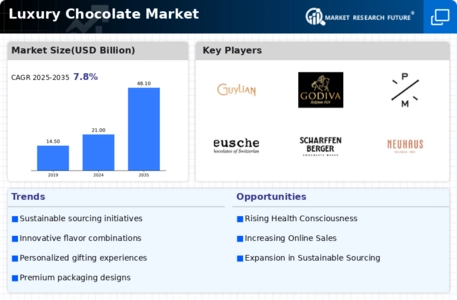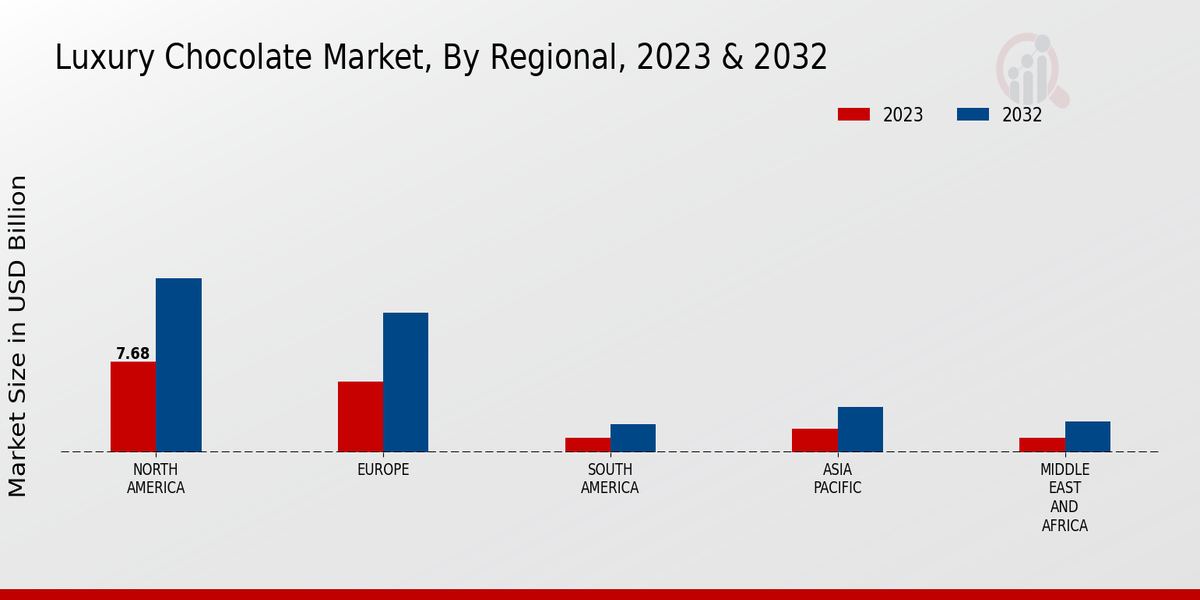Market Growth Projections
The Global Luxury Chocolate Market Industry is projected to experience substantial growth over the next decade. With a market value of 21.0 USD Billion in 2024, it is expected to reach 48.1 USD Billion by 2035. This growth trajectory reflects a compound annual growth rate of 7.81% from 2025 to 2035, indicating a robust expansion driven by various factors, including consumer demand for premium products, health consciousness, and innovative offerings. As the market evolves, stakeholders must remain attuned to emerging trends and consumer preferences to capitalize on the opportunities presented by this dynamic industry.
Cultural Influence and Gifting Trends
Cultural influences and gifting trends significantly impact the Global Luxury Chocolate Market Industry. In many cultures, chocolate is synonymous with celebration and gifting, particularly during holidays and special occasions. This cultural association drives consistent demand for luxury chocolates as gifts. Brands that effectively leverage these cultural connections can enhance their market presence. Additionally, the rise of personalized gifting experiences, where consumers seek customized chocolate options, further fuels market growth. As gifting remains a prevalent practice, the luxury chocolate segment is likely to benefit from these cultural dynamics.
Innovative Flavors and Product Offerings
Innovation plays a crucial role in the Global Luxury Chocolate Market Industry, as manufacturers continuously explore new flavors and product offerings to captivate consumers. The introduction of exotic ingredients, such as spices and herbs, alongside traditional chocolate, creates unique taste experiences. Seasonal and limited-edition products also attract consumers seeking novelty. This emphasis on innovation not only enhances consumer interest but also contributes to the overall market growth. As brands strive to differentiate themselves, the expansion of product lines with innovative flavors is likely to be a key driver in the coming years.
Health Consciousness and Ethical Sourcing
The Global Luxury Chocolate Market Industry is increasingly influenced by health consciousness among consumers, who are more inclined to choose chocolates with health benefits. Dark chocolate, known for its antioxidant properties, is gaining popularity. Additionally, ethical sourcing practices are becoming paramount, as consumers prefer brands that prioritize sustainability and fair trade. This shift towards health-oriented and ethically produced luxury chocolates is likely to enhance brand loyalty and consumer engagement. As a result, brands that align with these values may see a competitive advantage, further driving growth in the market.
E-commerce and Digital Marketing Expansion
The Global Luxury Chocolate Market Industry is witnessing a significant transformation due to the expansion of e-commerce and digital marketing strategies. Online platforms provide brands with the opportunity to reach a broader audience, facilitating direct-to-consumer sales. This shift is particularly relevant as consumers increasingly prefer the convenience of online shopping. Furthermore, effective digital marketing campaigns enhance brand visibility and consumer engagement. As a result, e-commerce is expected to play a pivotal role in the market's growth, allowing luxury chocolate brands to tap into new demographics and increase their market share.
Growing Consumer Demand for Premium Products
The Global Luxury Chocolate Market Industry experiences a notable increase in consumer demand for premium and artisanal chocolate products. This trend is driven by a shift in consumer preferences towards high-quality ingredients and unique flavor profiles. As consumers become more discerning, they seek out chocolates that offer not only taste but also a luxury experience. This demand is reflected in the projected market value of 21.0 USD Billion in 2024, with expectations to reach 48.1 USD Billion by 2035. The compound annual growth rate of 7.81% from 2025 to 2035 indicates a robust market trajectory fueled by this evolving consumer behavior.





















Leave a Comment